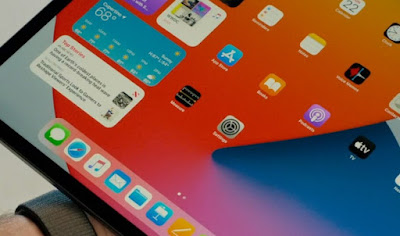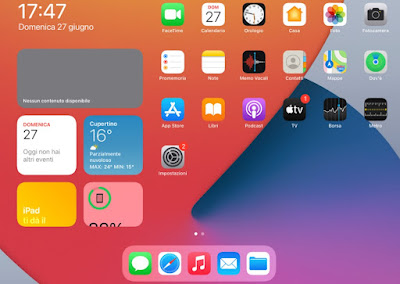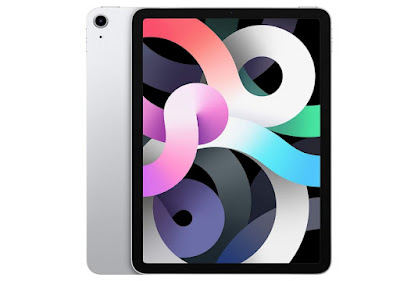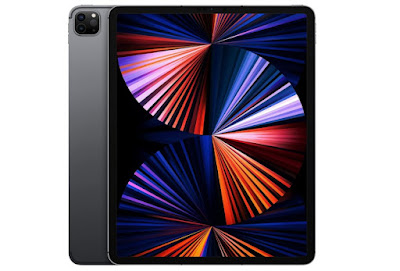 On all the new iPads we find a different operating system than the iPhones: iPadOS. Although the system is apparently similar to that present on the iPhone, there are substantial differences voted for use in multitasking, designed to make iPadOS a perfect operating system to replace traditional laptops.In the following guide we will show you what the differences between iOS and iPadOS, so that we can grasp them every time we have a new generation iPad in our hands. If we have not had the opportunity to try an iPad so far, we can also read the chapter dedicated to the best iPads on the market, so as to immediately buy the iPad suitable for our needs.
On all the new iPads we find a different operating system than the iPhones: iPadOS. Although the system is apparently similar to that present on the iPhone, there are substantial differences voted for use in multitasking, designed to make iPadOS a perfect operating system to replace traditional laptops.In the following guide we will show you what the differences between iOS and iPadOS, so that we can grasp them every time we have a new generation iPad in our hands. If we have not had the opportunity to try an iPad so far, we can also read the chapter dedicated to the best iPads on the market, so as to immediately buy the iPad suitable for our needs.READ ALSO -> How to access network resources from iPhone and iPad
IPadOS compatibility
iPadOS can be installed on all Apple tablets that have more than 2GB of RAM, therefore the vast majority of models sold after 2018. To be precise, iPadOS can be installed on the following devices:
- iPad Air (2nd, 3rd and 4th generation)
- iPad mini (4th and 5th generation)
- iPad (fifth, sixth, seventh and eighth generation)
- iPad Pro 9,7″
- iPad Pro 10,5″
- iPad Pro 11 “(first, second and third generation)
- iPad Pro 12.9 “(first, second, third, fourth and fifth generation)
If we have one of the previous iPads it is worth checking if we have any pending updates, so that we can get thelatest version of iPadOS. To check for updates on iPadOS we connect the tablet to a stable Wi-Fi network then open the app Settings, press on the General menu, press on Software update and wait for the search for new updates.
If there are new updates for iPadOS, press on Download and install and then on Accept e I accept (if necessary), in order to start the download and installation of the system. When prompted, we restart the tablet to complete the procedure and thus find ourselves with the new iPadOS installed on our iPad.
Features of iPadOS
On iPadOS we can immediately see the new home screen, profoundly different from the one seen on iOS and consequently on the iPhone: the layout used is designed to facilitate the use of the tablet horizontally, with a reduced grid for app icons and widgets and available only on the right side of the home.
On the left side of the home we find the widgets on iPadOS, which then show information about the weather, news of the day or stock shares. This screen is activated the first time you start iPadOS and is customizable: to act on individual widgets or disable the ones we don’t like by scrolling to the right section of the screen and pressing the Edit button, located at the bottom at the bottom; alternatively we can always customize the widgets from the Widget Center, as already seen on iOS.
One point in common with iOS is the dark mode, which activates the dark theme (with black background and buttons / menus with shades of gray and white) within the iPadOS interface and in apps that support the dark theme. This function can be activated from the route Settings -> Display and brightness, by checking the box Dark or by activating the voice Automatic. By activating this last item, the iPad will automatically switch to dark mode and return to the light version of the theme based on the time of day. Basically, the change takes place based on the time of sunrise and sunset of the place where we are, but we can also customize the transition between dark theme and light theme according to our schedules.
Another feature taken from iOS and improved on iPadOS is Split View, which allows you to open two apps at the same time on the screen, also choosing the aspect ratio of both apps open in the foreground. To exploit it we must open the first app, then call up the lower Dock bar and keep your finger pressed on the second app we want to open, so that we can place it on the screen. Compared to iOS we can open even more instances of the same app on Split View: we can therefore open two Safari windows and open two different sites to be placed side by side, so as to increase productivity.
Among the functions enhanced to the maximum on iPadOS we also find Slide Over, which allows you to open an app in a floating window within the screen, so that you can also open three apps together (two to be kept in Split View and one floating, to be recalled if necessary or to be hidden in the edges).
Another important novelty of iPadOS concerns the keyboard integrated into the operating system: the iOS keyboard is also present on this system but integrates new gestures for typing and can also be transformed into a floating keyboard, so as to move it to the part of the screen where it does not cause discomfort. Remaining in the field of “writing”, it should also be noted the possibility of installing custom fonts, via the App Store
Using iPadOS we will have the full Apple Pencil support, the capacitive pen developed by Apple to be able to write and draw on the iPad with a precision never seen before on other predictive pens on the market. In fact, every modern iPad should have its Apple Pencil always close by, given the comfort with which we can write or draw on the screen.
The support for external devices, which have always been very difficult to connect to an extremely closed product such as an iPad: with the new operating system we can connect USB sticks, console controllers, mice, keyboards, external monitors and Macs, so as to be able to transform the iPad into an external monitor , as also seen in our guide Use an iPad as a second monitor.
Which iPad to buy
We were intrigued by the iPadOS operating system and want to try it now? The “cheapest” iPad on which we can find this operating system is theiPad 9,7 (6th Gen), available refurbished on Amazon for less than 400 €.
On this iPad we find a 9.7-inch Retina screen, unlock via Touch ID, 128 GB internal memory, Wi-Fi connection, 36.59 Watt hour battery, HD rear camera, FaceTime compatible front camera and iPadOS operating system.
If, on the other hand, we are looking for the latest iPad, we can take a look at theApple iPad Air (2020), refurbished for less than € 600.
On this iPad we find a 10.9-inch Liquid Retina screen, unlock via Touch ID, A14 bionic chip with neural engine, 64 GB internal memory, Wi-Fi connection, 12 MP HD rear camera, front camera compatible with FaceTime from 7 MP and iPadOS operating system.
For those who want the top of the range with the largest possible screen, they can definitely bet on iPad Pro 12,9″ (2021), new around 1300 €.
This tablet boasts a 12.9-inch Liquid Retina XDR display with ProMotion and TrueTone technology, Apple M1 chip, 256 GB of internal memory, TrueDepth front camera with ultra-wide angle and Auto Framing, Wi-Fi 6 connection, Thunderbolt-USB port 4 and iPadOS operating system.
Conclusions
iPadOS is in fact a version of iOS designed to make the most of Apple tablets, with some tricks and some functions that actually increase productivity and allow you to use a tablet as a laptop and not as a large smartphone, even if at the end the same apps seen on the iPhone are exploited. If we are interested there are iPads for all budgets, although prices obviously tend to be much higher on average than Android tablets.
Always on the subject of iPads and Apple tablets, we invite you to read our guides Models and features of the new iPads and Connect iPad and iPhone to TV over Wi-Fi or cable.




